In a world dominated by commercialized livestock, preserving unique and rare cattle breeds is a testament to our agricultural heritage. As industrial farming practices overshadow traditional husbandry, these captivating breeds, each with its distinct characteristics and historical significance, face the threat of extinction.
This article delves into the captivating stories behind these rare cattle breeds, shedding light on the dedicated efforts of farmers, conservationists, and organizations striving to safeguard their genetic diversity and cultural importance. Discover the astonishing beauty and resilience of these precious bovine treasures that remind us of the importance of cherishing our agricultural heritage for generations to come.
8. Chillingham White Cattle
Scientific Name: Bos taurus
Origin: UK
Weight: 280 kg to 300 kg
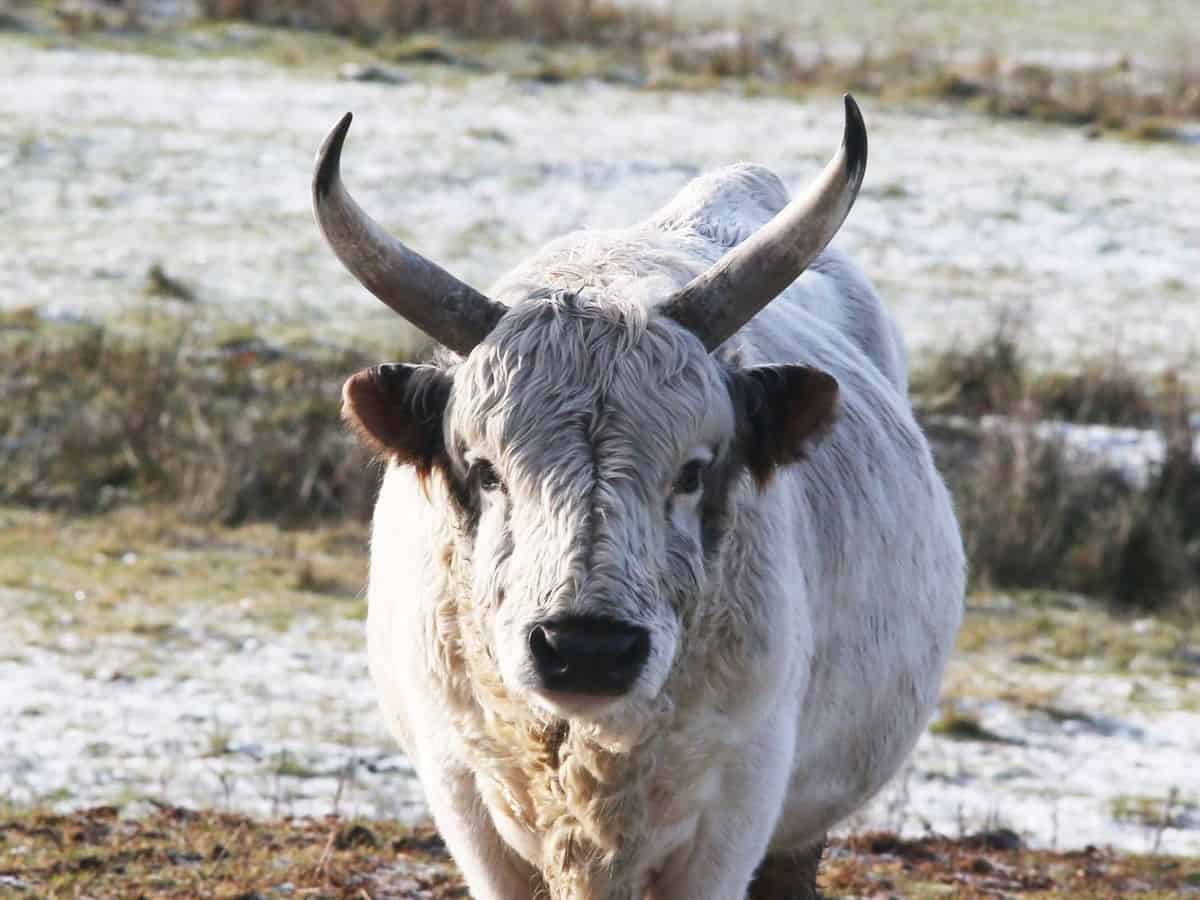
Chillingham White Cattle, scientifically known as Bos taurus, is a rare and unique breed of cattle originating from the United Kingdom. They are known for their distinct appearance, which sets them apart from other cattle breeds. One of the most striking features of the Chillingham White Cattle is their pure white coloration, giving them an ethereal and almost mystical appearance.
Despite their rarity, the breed is currently not considered to be at risk, thanks to conservation efforts and careful management. Chillingham White Cattle are relatively small compared to some other cattle breeds, with adult individuals typically weighing between 280 kg to 300 kg. Their compact stature and robust build make them well-adapted to surviving in harsh environments, particularly in their native habitat.
Did You Know?
Chillingham White Cattle are thought to be direct descendants of the ancient wild oxen that once roamed the British Isles.
7. Highland Cattle
Scientific Name: Bos taurus taurus
Origin: Scotland
Weight: 500 kg to 800 kg
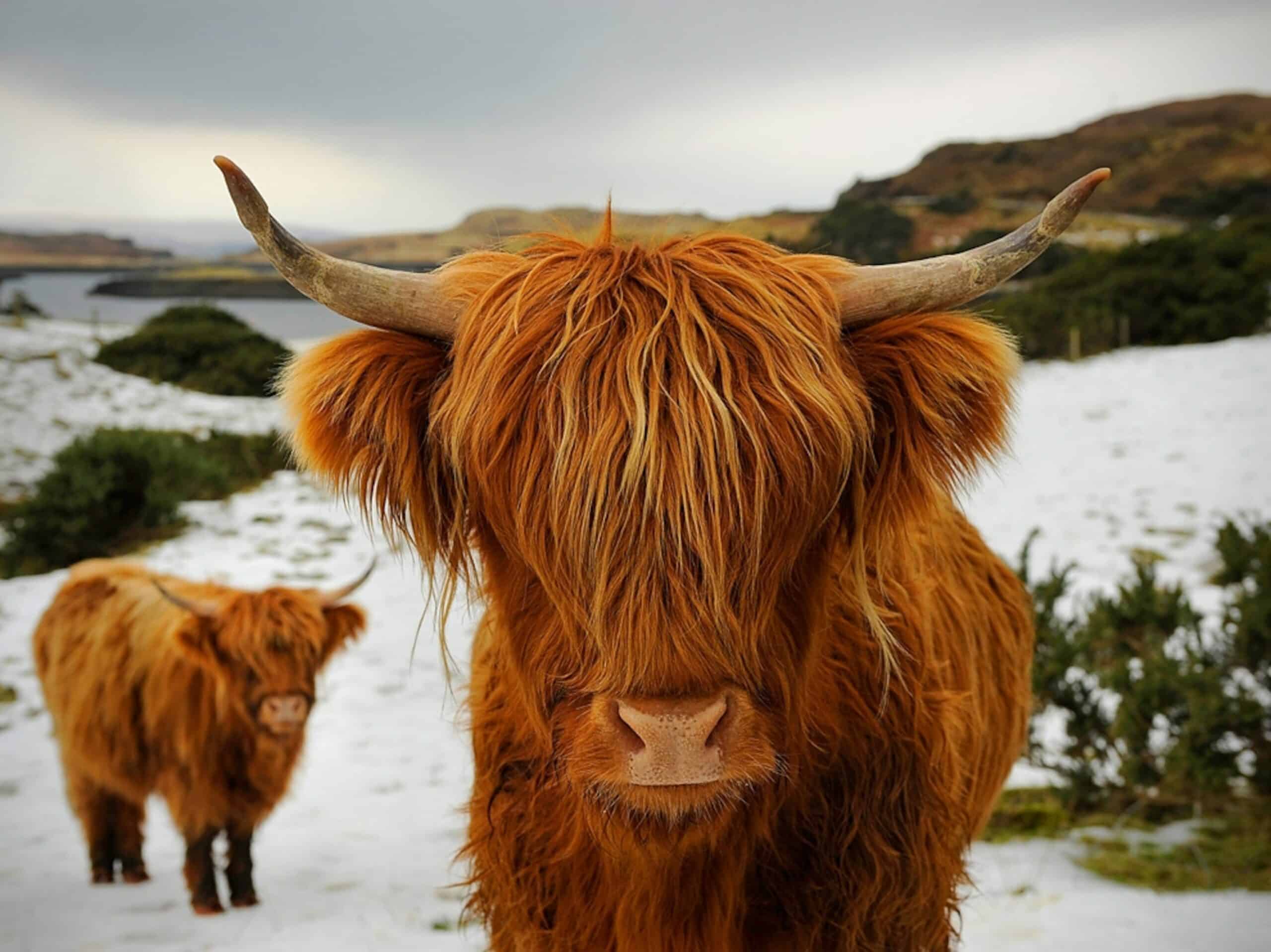
Highland Cattle are considered rare due to their distinct and unique characteristics, historical significance, and limited population size. Originating from Scotland, these majestic creatures have captured the fascination of animal enthusiasts and historians alike. One of the defining features that set them apart is their impressive long, shaggy hair that provides protection against harsh weather conditions in their native highland regions.
This adaptation, coupled with their resilience and ability to forage for food on rough terrains, has allowed them to thrive in challenging environments. Despite their sturdy build, Highland Cattle are known for their calm and gentle temperament, making them popular among farmers and breeders seeking docile livestock.
However, their scarcity can be attributed to various factors, including changes in agricultural practices, the encroachment of modern breeds, and habitat loss.
Did You Know?
Their long, thick, and shaggy double coat comprises two layers, providing excellent insulation and protection against harsh weather conditions, allowing them to thrive in cold and wet climates.
6. Dexter Cattle
Scientific Name: Bos taurus taurus
Origin: Ireland
Weight: 317 kg to 408 kg

Dexter Cattle are exceptionally rare and highly coveted among cattle breeds due to their distinctive qualities. One of their most notable features is their small size, setting them apart from the average bovine breed. With weights ranging from 317 kg to 408 kg, they are considered a perfect fit for small-scale and hobby farmers with limited land resources, offering ease of management and handling.
Dexter Cattle originates from Ireland and boasts a rich historical and cultural background, adding to its allure for enthusiasts and breeders alike. Fortunately, Dexter Cattle are not currently at risk of extinction, but their limited population makes them a valuable find for those looking to preserve their unique genetic traits.
Their scarcity fosters appreciation for their captivating characteristics, inspiring conservation efforts to protect their distinctiveness and ensure their continued existence in the realm of cattle farming.
Did You Know?
Dexters are often called a “triple-purpose” breed because they excel in three key areas: meat production, milk production, and draft work.
5. Belgian Blue
Scientific Name: Bos taurus
Origin: Belgium
Weight: 1100 to 1250 kg
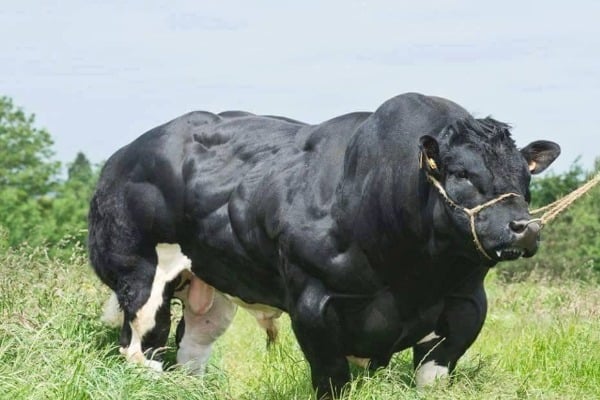
The Belgian Blue is also considered a rare cattle breed due to its distinctive and unusual appearance and relatively limited population. Originating from Belgium, this breed is characterized by its impressive muscular development, giving it a remarkably bulky and heavily-muscled physique.
The breed’s unique appearance is primarily attributed to a genetic mutation known as “double muscling,” which causes a significant increase in muscle mass compared to other cattle breeds. As a result of this genetic trait, the Belgian Blue stands out as one of the most muscular cattle breeds in the world.
However, this genetic trait also comes with certain challenges related to calving difficulties, which has led to the breed being closely monitored and managed by breeders and conservation organizations.
Did You Know?
The double muscling trait in Belgian Blue cattle can be traced back to a naturally occurring mutation in the myostatin gene, which regulates muscle growth.
4. Texas Longhorn Cattle
Scientific Name: Bos taurus taurus
Origin: United States
Weight: 635 kg to 1133 kg
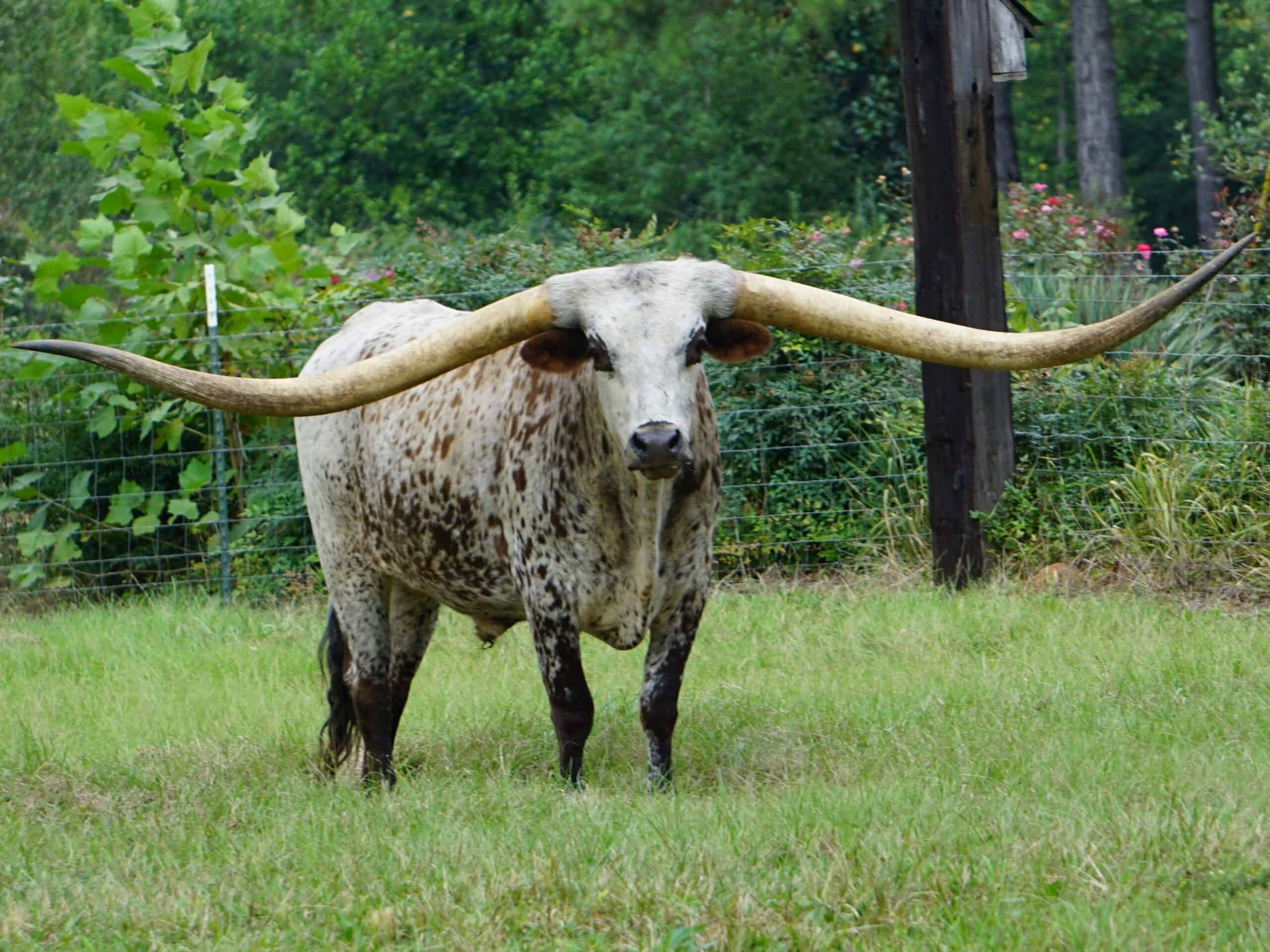
Texas Longhorn cattle are a breed known for their iconic long, distinctive horns and deep-rooted historical significance. Originating in North America, particularly in the state of Texas, they are one of the oldest and most storied cattle breeds on the continent.
Longhorns are descendants of Spanish and European cattle brought to the Americas by explorers and settlers in the 15th and 16th centuries. Over the centuries, these cattle adapted and evolved to thrive in the harsh and challenging environments of the American Southwest.
Despite facing near extinction during the late 1800s and early 1900s due to crossbreeding with other cattle breeds and overhunting, Texas Longhorns have made a remarkable comeback, largely thanks to the efforts of dedicated breeders and conservationists.
Did You Know?
The longest recorded horns on a Texas Longhorn steer measured an impressive 9 ft 9.25 in. (2.97 m) from tip to tip. These massive horns belong to a steer named “Lazy J’s Bluegrass” and were officially recognized by Guinness World Records in 2017.
3. Ankole-Watusi
Scientific Name: Bos taurus indicus
Origin: East Africa (Uganda, Rwanda, and Burundi)
Weight: 408 kg to 725 kg
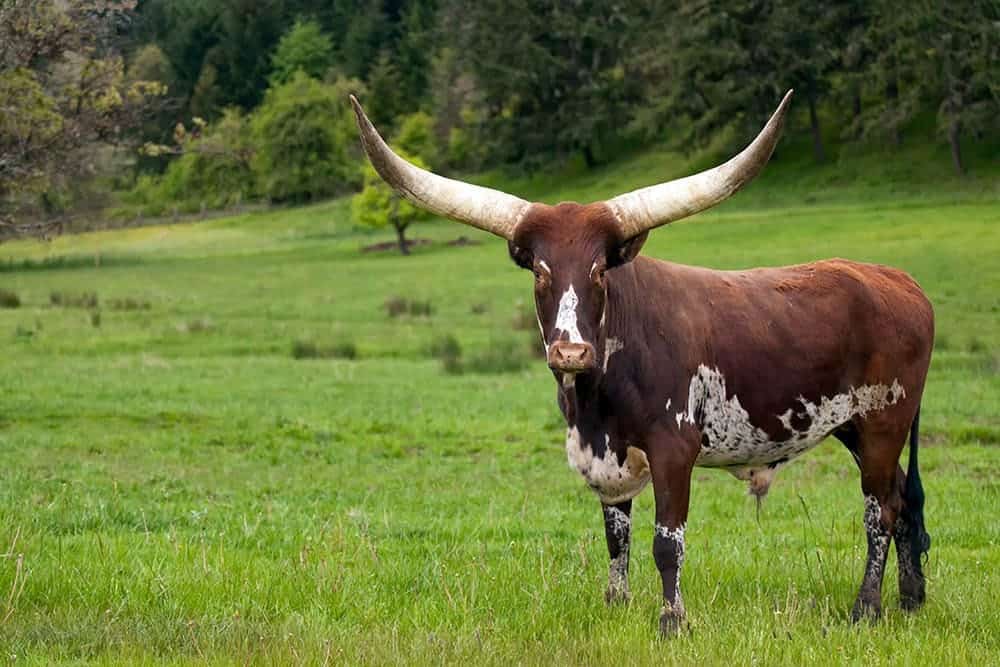
The Ankole-Watusi, also known simply as Watusi or Ankole cattle, is a unique and visually striking breed of cattle that hails from Africa. Renowned for their distinctive long, curving horns, spanning up to 8 feet (2.4 meters) or more from tip to tip, these majestic animals have captivated people worldwide.
The breed originated in the Great Lakes region of East Africa, particularly in countries like Rwanda, Burundi, Uganda, and parts of the Democratic Republic of the Congo. They can thrive in harsh, arid landscapes where other cattle breeds might struggle to survive.
The unique horns not only serve as a natural cooling system but also have cultural significance for the local communities, being used for traditional ceremonies and status symbols.
Did You Know?
Despite their impressive appearance, Ankole-Watusi cattle are generally known for their calm and docile temperament, making them manageable to handle.
2. Irish Moiled
Scientific Name: Bos taurus
Origin: Ireland
Weight: 272 kg to 362 kg
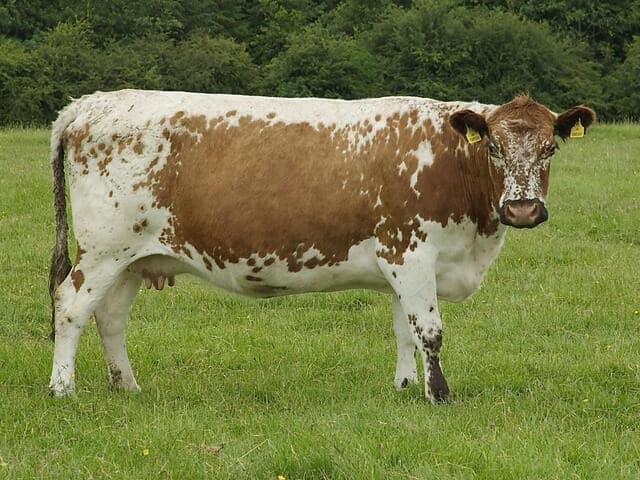
The Irish Moiled is considered a rare cattle breed due to its dwindling population and vulnerability. Originating from Ireland, this unique breed has faced significant challenges to its survival, leading to its classification as “very rare” by various agricultural and conservation organizations.
One of the primary reasons for its rarity is the decline in demand for traditional and native cattle breeds in favor of more commercialized and high-yielding varieties. The Irish Moiled’s distinct characteristics also contribute to its rarity. It is a medium-sized breed with a weight ranging from 272 kg to 362 kg, making it smaller than some of the larger, more commonly reared cattle breeds.
Did You Know?
The breed’s most striking feature is its distinctive red or black coat color, and many individuals have an eye-catching white stripe running down their back.
1. Vaynol Cattle
Scientific Name: Bos taurus
Origin: UK
Weight: 300 to 450 kgs.
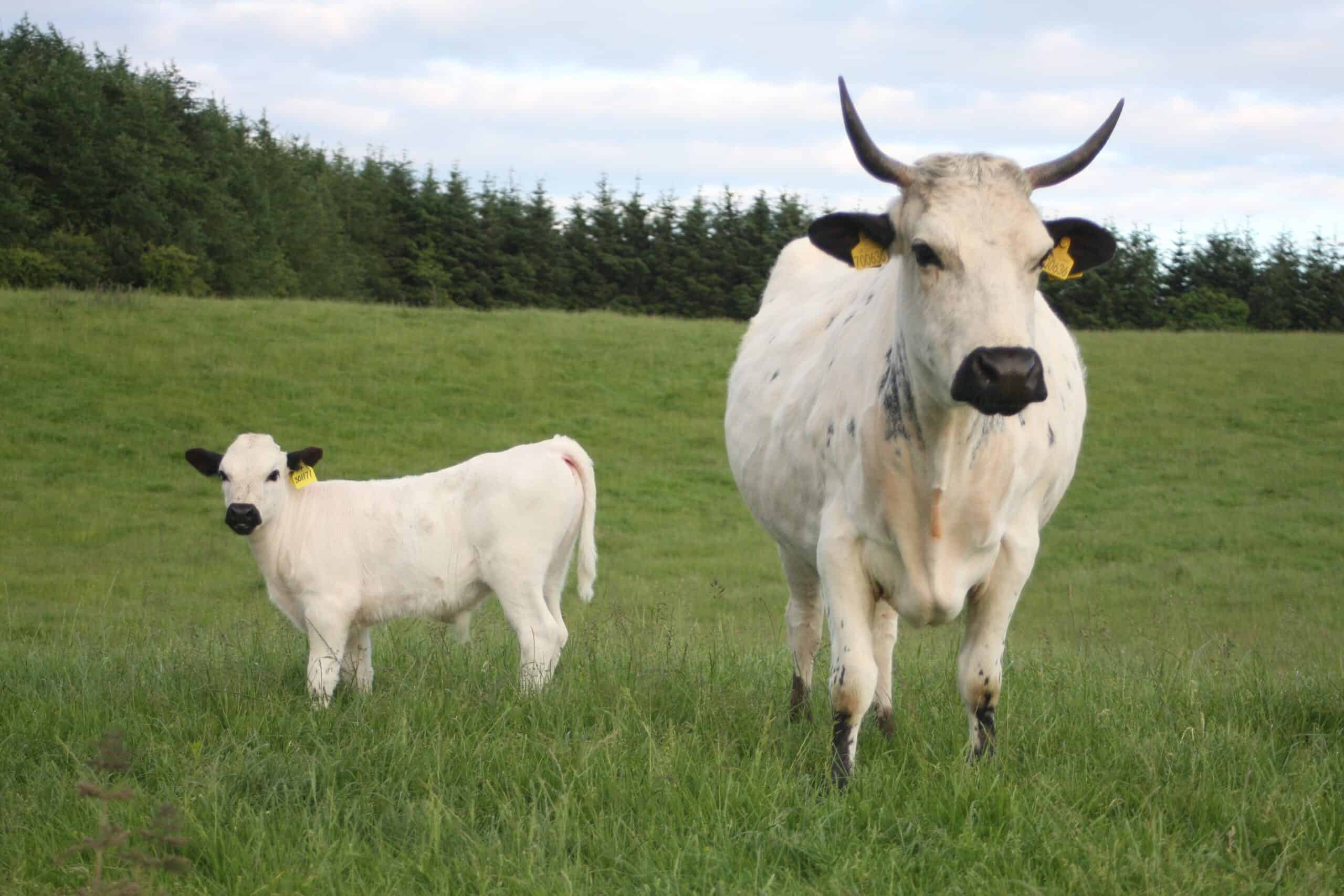
Vaynol cattle, also known as Anglesey cattle, is an exceedingly uncommon cattle breed originating from the Isle of Anglesey in North Wales. Its distinct appearance and historical significance make Vaynol the rarest cattle breed globally. Developed by affluent landowners of the Vaynol Estate during the 18th century, Vaynol cattle possess unique traits like a sleek black coat, medium to large size, and distinctive lyre-shaped white horns.
Not just for aesthetic or historical value, these cattle also have practical uses for beef and leather production. They are also excellent for conservation grazing due to their ability to survive on poor grazing, owing to their size and thrifty nature.
Over time, their numbers drastically declined due to changes in farming practices and the preference for more commercial breeds. The breed’s limited distribution on the Isle of Anglesey further contributed to its rarity, putting it at risk of extinction.
Did You Know?
Previously considered a wild cattle breed, Vaynol cattle are now seen as semi-feral, mainly due to their endangered status and increasing interaction with humans.
